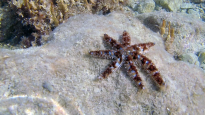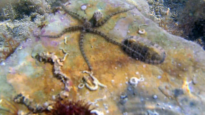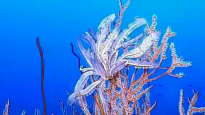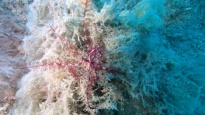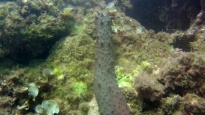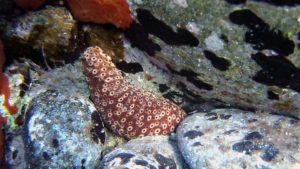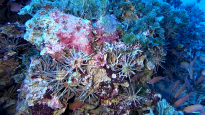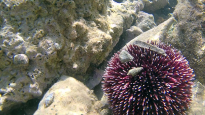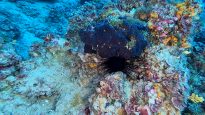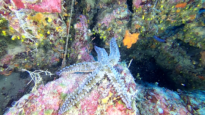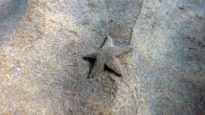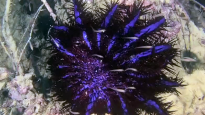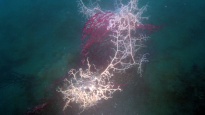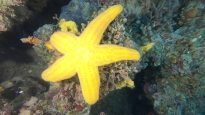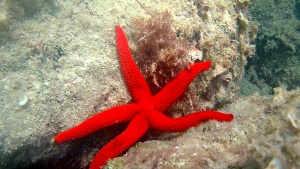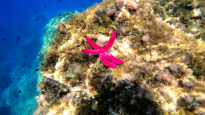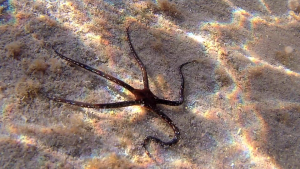Echinoderms
Common Brittle Star - Ophiothrix fragilis
Crinoidi - Crinoidea
Giglio di mare - Antedon Mediterranea
Oloturia - Holothuria tubulosa
Oloturia Maculata Cetriolo di mare a punte scure - Holothuria sanctori
Pencil urchin - Stylocidaris affinis
Purple Sea Urchin - Sphaerechinus granularis
Sea Urchins - Paracentrotus lividus
Spiny Starfish - Marthasterias glacialis
Starfish Astropecten jonstoni
Stella corona di spine - Acanthaster planci
Stella Gorgone - Astrospartus mediterraneus
Stella Marina Arancione - Hacelia attenuata
Stella marina rossa - Echinaster sepositus
Stella Serpente - Ophidiaster ophidianus
Stella Serpentina Liscia - Ofiura - Ophioderma Longicauda
Echinoderms are a phylum of marine deuterostome. The name comes from the fact that they often are covered with limestone plates. The origin of the phylum dates from the Lower Cambrian, living species are about 6,000. This phylum consists of five main types of animals: starfish, sea urchins, sea cucumbers, brittle stars and crinoids. Echinodermi stelle marine ricci crinoidi Echinoderms starfish sea urchin crinoids
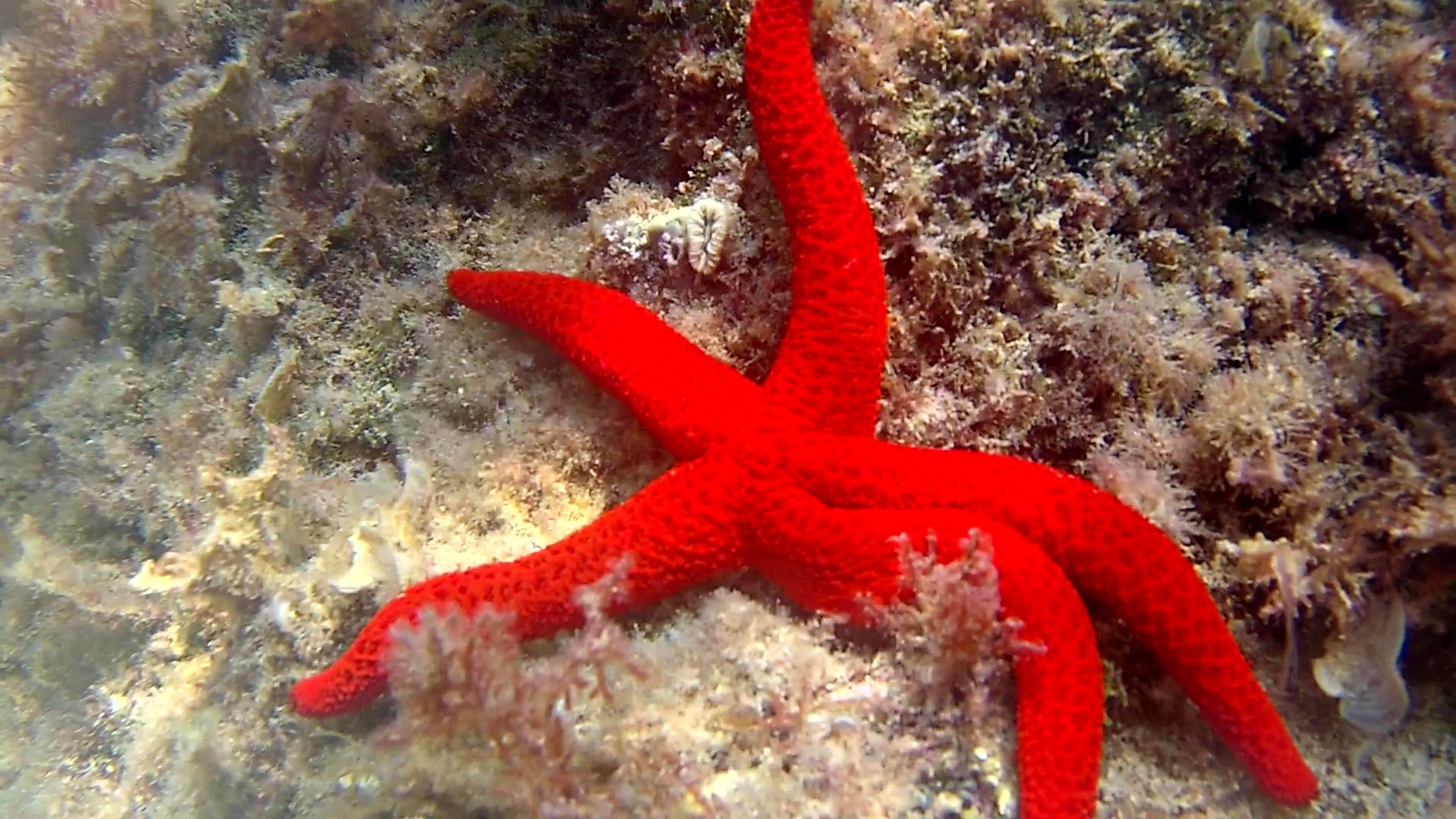
Features
Are bilateria organisms, larvae, and adults have an apparent radial symmetry, which is secondary and partial. The embryo is in fact a bilateral symmetry and resembles that of chordates. During growth there is then a predominant development of the left side of the body at the right cost
All echinoderms exhibit an external structure to pentamer symmetry at some stage of life: some undergo further changes that restore bilateral symmetry.
The nervous system is polycentric.
Echinoderms are coelomates deuterostome closely related to chordates and hemichordates.
In them, not differentiates a head and their rounded bodies are arranged with a criterion similar to the one that is used to construct a wheel. From the body of these animals, many branch of invoice varies appendices. The sea lily looks like a strange plant. It adheres to the bottom of the sea and try the food waving her long feathery tentacles that can shut themselves up like the petals of a flower. The sea cucumber is usually placed on a side of his body he stretched and moves crawling in the same manner of a worm. Starfish have long pointed arms. The Ophiothrix, while moving crawling on the bottom, flapping his arms like snakes.
Most of the echinoderms is well protected against predators. Their body is covered with limestone plates, and although this may seem hard protective coating, in fact some animals can perform many movements. Echinoderms possess two different defense systems: the quills and the pedicels.
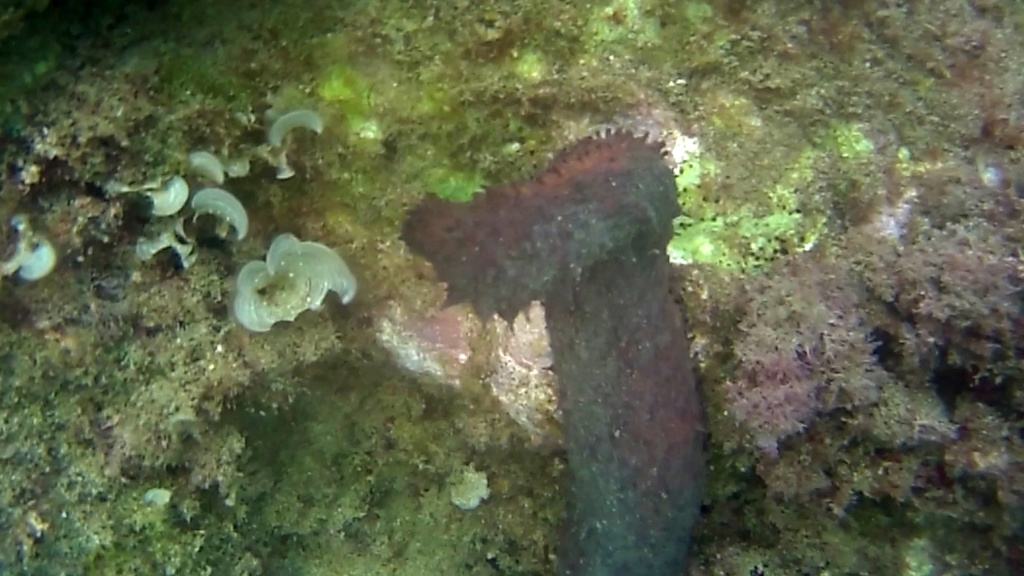
The sea urchin spines are so long and thin that it ends up looking like a bristling ball of needles. Just as the dust collects between the fringes of a carpet, various kinds of debris can stop between these spines. When a fragment or a small animal alights on an echinoderm, the pedicels move it. Only the sea cucumber has limestone plates scattered in the skin that covers his body soft. For catching food, sea cucumbers project out from their body of the tentacles.
Echinoderms have, within the body, only one of aquifers channel system, serving them to breathe, to capture prey and for locomotion. The water, entering through a perforated plate (plate madreporic), passes through a complicated system of canals connected with small pimples ambulacrali. Each pedicel widens to form a small pouch or ampoule, while at the ends with a suction cup. As the water is forced in and out of the dick, this alternately adheres to the ground when it is swollen with water and it detaches when it contracts. Each animal has hundreds of tube feet, coming out through tiny holes dermascheletro.
When echinoderms moving on a sandy bottom, the tube feet do not work; because the suction cups can go into action, it is necessary that the animal is moving on a hard surface, such as rocky. The starfish is also need some suckers to open the shells of mollusks. Echinoderms are animals lacking eyes but equally able to discern the light signals. The ends of the pedicels ambulacrali fact also represent the seat on which the photoreceptor cells, which cooperate synergistically are arranged and work collectively as one big compound eye.
Almost all of these animals feed on small organisms on the sea floor. The sea cucumber and the dollar sand swallow large amounts of sand, of which only digest the organic matter contained therein. The digestive system of echinoderms is simple and consists of a mouth placed on the lower face of the body, while the anal opening is located on the upper face, that is, in a position diametrically opposite to the mouth. The mouth and the anus are connected by a digestive tract. Echinoderms breathe by means of all the thinned parts that protrude outside. In sea urchins the respiration takes place also by means of finger-like expansions in thin walls and said hollow gills that are located on the ventral surface where the pedicellaria are also present.
La Stella Serpentina Liscia – The Brittle Starfish – Ophiodermatidae – intotheblue.it
The nervous system is represented by a simple ring of nervous tissue, which surrounds the mouth and is divided into nerve cords. A fluid fills the cavity of the body and provides to spray the organs. Echinoderms, we can distinguish three different parts of the body; the digestive tract, the body cavity and the outer wall.
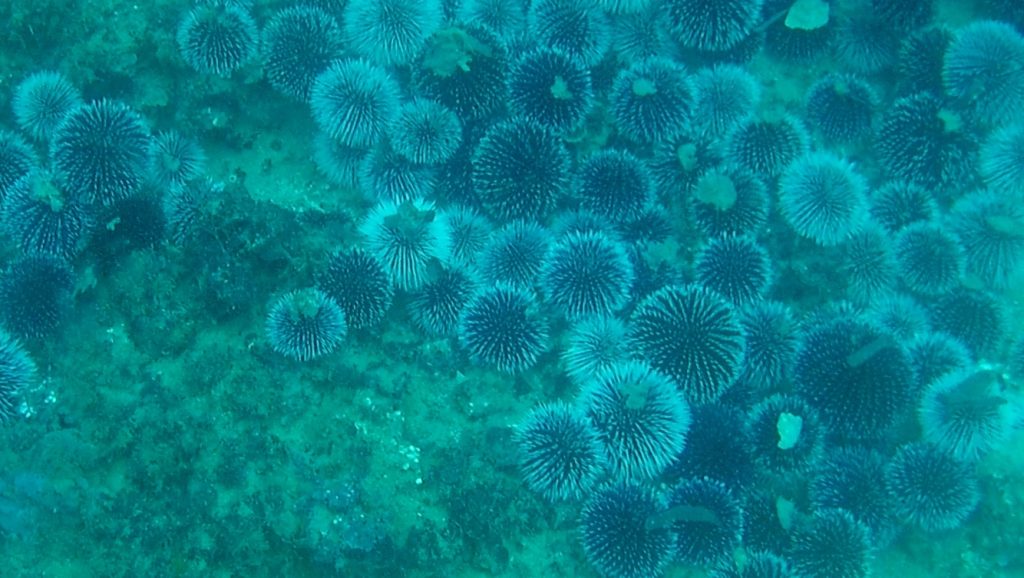
The sexes are separate and fertilization takes place in the water. The larvae of echinoderms has a bilateral symmetry and its development is very different from that of the larvae of the lower invertebrates. For this echinoderms are considered animals rather evolved and in them is already possible to establish kinship ties to the most primitive chordates.
Gallery:

